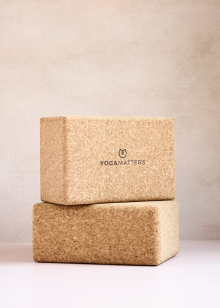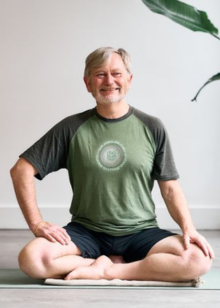If the term Tantra philosophy conjures up images of the kama sutra, entwined bodies and weird sexual acts, you’d be buying into a stereotype that has prevented so many people from actually experiencing the liberating branch of yoga that is Tantra, and its fascinating philosophy.
As far as I’ve discovered, Tantra is about freedom, unity, expression, being 100% present, and choosing to fully experience each moment, rather than running away from or trying to change it. Full of magic and mystery, and with all the ‘sparkly bits’ as my teacher likes to say, Tantra is steeped in ancient wisdom, and offers an open door to continual discovery, curiosity and expansion of mind.
Tiny History of Tantric Philosophy
There are many branches of Tantra from many parts of Asia, all with a slightly different influence depending upon whether the roots stem from Tibetan Buddhism, or the Indian Vedas. What is perhaps most interesting and useful to first understand however, is the meaning of the word Tantra itself. At a time when several ancient Vedic traditions now known as Hinduism were dominant in India, a subculture of people were simultaneously developing philosophies and practices based around beliefs that took a different path, and somewhat challenged the Vedic ideals. Whilst the Vedic culture was somewhat regulated and had many rules regarding worship, and many rituals to adhere to, Tantra was a little like the counter-culture, rebelling against the norm and going beyond the boundaries of human thinking and acting at that time.
Sutra & Tantra
If you’ve ever read Patanjali’s Yoga Sutras, or any other text containing the word sutra in its title, you’re reading what is known as a thread of texts. The word sutra essentially means ‘strand’ or ‘thread’, a piece of wisdom or knowledge to learn from. Tantra on the other hand, means loom, referring to the loom that weaves all the ‘threads’ together. Whilst sutras deal with detail and puzzle-solving, Tantra is the expanded mind, the very process of thought itself, and unlike Vedic texts which might answer life’s questions, Tantra questions life itself.
Dualism & Non-Dualism
If you’ve taken a yoga teacher training course or a deep dive into yoga philosophy, one of the aspects you may have been uncertain of is the whole dual and non-dual subject. Whilst texts like Patanjali’s yoga sutras are an example of dualism, known as dvaita in Sanskrit, tantric texts and philosophies are non-dual, or advaita. With dualism, there’s a belief that two separate entities exist. The first is Purusha – a higher power, unseen force, or God, and this dualistic God is seen as a completely separate being living in another place to us, controlling the universe from above. Within duality, the world, our emotions and thoughts are seen as real, and we are to look to a higher power and spiritual texts to help answer life’s questions. This way of thinking – according to Sri Maddhacharya – prevents people falling into escapism, therefore encouraging each person to take action and engage fully with the world around them.
With non-dualism, there’s an essence of one-ness. The higher power, god, spirit, universe or however else you might refer to it is within everything in nature, including us. Creation and creator are one, and any sense of separateness is an illusion. Within non-dualism or advaita, the whole world is an illusion, including all of our thoughts and emotions, relating strongly to the Buddha’s concept of heaven and hell being within our own minds. It is said that once the illusion of separateness, ego and self-obsession are lifted (after a lot of years of meditation and practice), we become one with that higher power, knowing on all levels that we really are all ‘one’.
With the awareness that the world is an illusion and all thoughts are not as concrete as they may seem, those who follow non-dualist practices may feel a sense of lightness, less burdened by the world and its difficulties. Instead of looking to an outward higher power or god to answer life’s questions, we’re encouraged to observe ourselves and study the way we act, think and live in the world. Tantra encourages each person to fully experience their emotions, allowing anything from rage to romance, sorrow to joy, to fill and engulf the mind and body, and therefore fully experiencing life’s moments. Rather than repressing or pushing away from emotions and experiences, tantric traditions looks to gently (and sometimes not so gently) stir them up, so they can rise to the surface of our awareness, and more easily be dealt with and released. Emotions are after all energy-in-motion, and if they’re allowed to move and flow, our minds and lives may begin to take on the ability to progress and flow too.
Practicing Presence
Tantric philosophy and non-dualist practices are built upon thousands of years of wisdom, and much like all yoga practices, we’d be wise to choose which aspects work for us in every-day life. Whilst the concept of dualism and even Patanjali’s yoga sutras were actually meant for Brahmins, Kings and high-caste priests, the Tantric philosophy was intended for the householder, the everyday man, me and you.
Those of us not sitting on thrones or with a privileged life wouldn’t necessarily have time for the rituals and rules the Brahmins took time over, as we’d have to think about where the next meal was coming from and how best to care for the family. For those with a busy life, the multitude of practices and special observances wasn’t always useful or practical, and so the tantric traditions were picked up by those in the every-day world.
Perhaps it is the simple ability to allow each moment of life to flow through us that could be Tantra’s gift to the modern world. Perhaps Tantra’s way of embracing what we might otherwise reject, stirring up things we may have ignored and letting emotions be in motion could be a practice to use in every-day life, whether on the mat, on the bus, at a desk or walking to work.
Considering a higher power or universal energy is not just behind but within everything around us and within our own selves, we may begin to see the world in a slightly different light. Rather than being separate from the person opposite us, the taxi driver, the postman, or the girl on the supermarket checkout, this way of thinking encourages us to see the similarities we all share.
One-ness and unity inspires compassion for fellow man, kindness to others, and an ability to be more aware and awake to each moment. Emotions are allowed to flow, and so grudges and grievances more easily let go of. Life finds a rhythm and although that rhythm can vary in speed, it continues to play freely. If we let life be, if we embrace each moment, if we allow emotion to move and flow, then we start to give each personal equal respect, each opinion validity, each emotion the space it needs, and each moment of everyday the importance it deserves.














